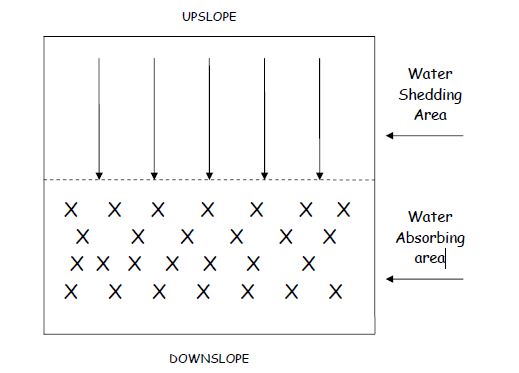Consistent with the pronunciation of the manufacturer’s name, you will see more or you will see less of each item listed, both for the good of the living earth, by using the Seymour Hoe Imprinter. The word “see” is just a short form of the word “observe.”
A List of See Mores:
1. See much more earth greening
2. See much more microroughness of the soil surface
3. See much more macroporosity of the soil surface
4. See much more water infiltration
5. See much more available soil moisture
6. See more big healthy plants
7. See much more soil microbes
8. See more soil invertebrates and burrowing activity
9. See much more biomass production
10. See much more evaporative cooling
11. See more global cooling
12. See more plants per unit area
13. See much more soil organic matter
14. See much more topsoil
15. See more soil carbon storage
16. See more good jobs that save the earth
17. See more labor intensity
18. See much more soil hydration
19. See more food, fiber, fuel and wealth
20.See more plant nutrients
21. See more corn leaves of greater width than otherwise
Now a list of See Lesses:
1. See much less surface smoothing
2. See much less surface crusting
3. See less surface water pollution
4. See much less water runoff and erosion
5. See less siltation or sedimentation
6. See much less flash flooding
7. See much less land desertification
8. See less atmospheric CO2
9. See less global warming
10. See much less soil dehydration
11. See less land denudation
12. See less weeds and diseases
13. See much less moisture stressed plants
14. See less world hunger and poverty
15. See less capital intensity
16. See less unemployment
17. See less land drying and heating
18. See less wind erosion
The preceding lists of “See More” and See Less” are just a few of the observed advantages of using the Seymour Hoe Imprinter.
Uses of this Hoe include:
1. Making imprints to grow plants
2. Chopping weeds and small saplings
3. Making firebreaks for fire control
4. Furrowing and ditching land
5. Soil surface denuding and smoothing
6. Cement mixing
7. Mixing subsoil and peat moss
8. Mixing and inverting compost
9. Unloading gravel from trucks and trailers
10. Spreading gravel on the soil surface
11. Unloading grain and seed
12. Incorporating vegetation and plant litter into the surface soil
13. Mixing seed and soil amendments
14. Firming and tamping soil
The water shedding area is prepared as follows:
- Mark the land area to be imprinted.
- Select a mix of seeds to be scattered.
- Uproot all vegetation with the hoe.
- Scatter the uprooted plants over the water absorbing area to form a mulch and/or select a soil amendment such as straw, compost or peat moss to the existing mulch.
- Level (smooth) the soil surface with the hoe blade.
- Tamp the soil surface with back side of the blade.
- Begin imprinting on the contour (cross-slope) along the upper edge of the area to be imprinted.
- Facing uphill (upslope) space imprints about one-foot apart, piling the soil removed at the lower edge of the imprint to help pool rain or irrigation water.
- Make imprints 7 inches wide, 2 to 3 inches deep and about 7 inches long.
- Stagger the second row of imprints with respect to the first row to intercept (capture) water as it runs downslope.
- Continue imprinting on the contour down the slope, one row at a time, always staggering the imprints in each row with respect to the adjacent upslope row.
- When the imprinting is completed, scatter seed over the area.
- Then scatter the amendment on top of the seed.
- Over time, maintain the soil free of plant litter and vegetation so that rainfall can seal the soil surface to enhance runoff.
Using the heavy duty Seymour Garden Hoe, either water shedding (runoff) or water absorbing (infiltration) can be increased by a factor of ten or more. In arid or semiarid regions both approaches are often useful for farming and gardening when used side by side with the area that sheds water lying just upslope from the imprinted area that absorbs water. The absorption area receives water from the shedding area to grow better plants and increase crop yield.
 Treatment response time is normally shortened with sprinkler irrigation, especially where rainfall is infrequent. Cool soils are warmed with the black peat moss amendment, accelerating seed germination and seedling growth rates when soil moisture is adequate.
Treatment response time is normally shortened with sprinkler irrigation, especially where rainfall is infrequent. Cool soils are warmed with the black peat moss amendment, accelerating seed germination and seedling growth rates when soil moisture is adequate.
For ecological restoration projects, the preceding process should be carried out during the fall season when seeds normally fall off of native plants. A cover/nurse plant like annual ryegrass should be included in the seedmix to stabilize the imprints against wind and the erosive impact of raindrops. The cover nurse crop also helps to keep macropores open for increased water infiltration rate and depth and creates new macropores by feeding burrowing invertebrate animals such as earthworms, ants, and termites. Later the residues from the cover/nurse crop decompose into plant nutrients to feed the emerging ecosystem. For more information contact: info@imprinting.org
